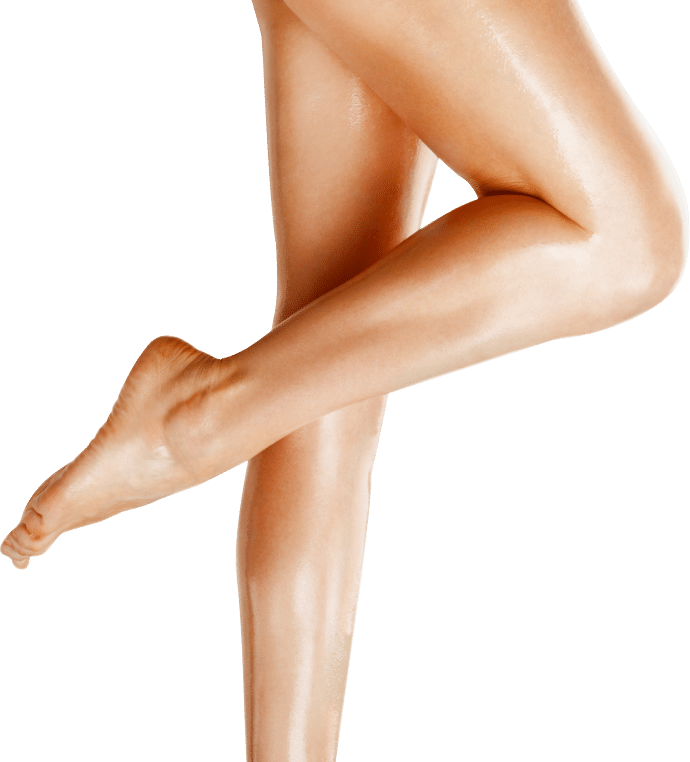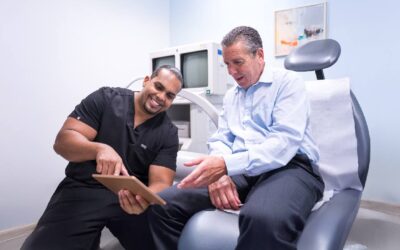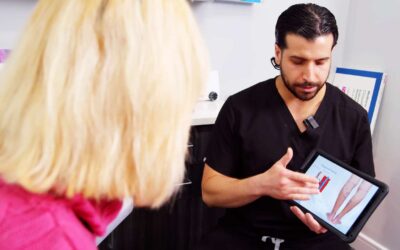What Causes Spider Veins in Ankles? The Causes & Risk Factors of Telangiectasia

Introduction to spider veins, aka telangiectasia — not to be mistaken for varicose veins
Spider veins, also called telangiectasias, are small, red, bluish, or purple veins that show up on our legs and ankles. They’re usually harmless and painless, but some people may find them cosmetically unappealing. Furthermore, they can also be caused by underlying chronic venous insufficiency, which is a dangerous medical condition. As such, even if spider veins aren’t inherently dangerous, they can be indicative of a dangerous problem.
While we often think of spider veins and varicose veins as one and the same, they are actually quite different. Varicose veins are larger, more raised, and more twisted than spider veins. Spider veins, on the other hand, are smaller and often look like a spider’s web. Varicose veins occur when more blood accumulates in the leg veins, so they protrude and bulge out of the skin’s surface. Varicose veins also cause more pain and discomfort.
Chronic venous insufficiency: the root cause of spider veins and varicose veins?
Chronic venous insufficiency (CVI) is a condition that occurs when veins have difficulty sending blood back to the heart. This can be caused by a variety of things, such as damage to valves, damage to the venous wall, and/or inflammation of veins. In healthy veins, the valves act as one-way doors to allow blood to flow towards the heart but not backward due to gravity. When your vein valves collapse or malfunction, blood flows backward and accumulates in the leg veins, leading to vascular dilation and the formation of spider veins and varicose veins.
Okay, but what causes spider veins in ankles and legs, specifically?
Spider veins are more common in the lower extremities of the body, such as the ankles, feet, and thighs. You can get spider veins on the face and other body parts as well, but they’re most common on the legs. That’s because the collapse of vein valves primarily affects the lower extremities of the body. The veins in your legs must carry blood up to the heart against the force of gravity. When the vein valves in the legs malfunction, gravity forces blood to flow backward and accumulate in leg veins, leading to spider veins in the ankles and legs.


BOOK AN APPOINTMENT
Do you have any symptoms? Consult now with one of the Best Vein Specialist in New Jersey
Why do women get spider veins, especially during pregnancy?
There are a few reasons why women are more likely to get spider veins during pregnancy. First, the extra weight of the baby can put pressure on the veins in the legs and cause them to bulge. Second, the increased levels of hormones can cause the walls of the veins to relax, making them more likely to develop spider veins. Finally, the increased blood volume during pregnancy can cause the veins to dilate and become more visible. Furthermore, women in general have a higher risk of spider veins because the estrogen and progesterone hormones can weaken the vein valves, increasing the risk of vein disease, spider veins, and varicose veins.
What are the other risk factors for spider veins?
- Age: as you get older, the valves in your veins can start to weaken. This makes it more likely for blood to pool in your veins.
- Injury: if you’ve had an injury to your leg, that can damage the valves in your veins.
- Pregnancy: pregnancy can cause spider veins and varicose veins. That’s because the extra weight of the baby puts extra pressure on your veins.
- Obesity: carrying extra weight puts extra strain on your veins.
- Standing or sitting for long periods of time: if you have a job that requires you to stand or sit for long periods of time, that can also make it more likely for blood to pool in your veins.
I have a high risk of spider veins and varicose veins. How can I prevent spider veins?
If you have a high risk of spider veins or varicose veins, there are a few things you can do to minimize the risk. Since spider veins and varicose veins can occur because of numerous underlying factors, there are no definitive ways to prevent them. But you can make some lifestyle changes to reduce the risk of spider veins:
- Exercise: exercising can help to improve blood circulation and prevent blood from pooling in your veins.
- Elevate your legs: elevating your legs can help to reduce the pressure on your veins and prevent blood from pooling in your veins.
- Wear compression stockings: compression stockings can help to improve blood circulation and prevent blood from pooling in your veins.
Spider veins and varicose veins: how to get rid of them?
If you have spider veins or varicose veins, you must contact a medical center for vein treatment in New Jersey. The medical center must be led by board-certified vein doctors who can diagnose and treat the root cause of spider veins, and not just the symptoms. The following are some of the best minimally invasive vein treatments in New Jersey:
- Sclerotherapy: sclerotherapy is a procedure that involves injecting a sclerosing solution into the veins. The solution irritates the walls of the veins and causes them to collapse. Soon, the spider veins harden into scar tissues and get metabolized by the body.
- Endovenous laser therapy: endovenous laser therapy is a procedure that involves using a laser fiber to heat and destroy the diseased saphenous vein responsible for your spider veins. This procedure treats the root cause of spider veins.
- Radiofrequency ablation: radiofrequency ablation is a procedure that involves using heat or radiofrequency waves to destroy the diseased vein responsible for your vein problems. This procedure also addresses the root cause of spider veins.
New Jersey Vein Treatment is a medical center specializing in minimally invasive spider vein and varicose vein treatments in New Jersey. We have state-of-the-art offices in Paramus, Clifton, Woodbridge, and Woodland Park. Please schedule an appointment at your nearest medical center for vein treatment in New Jersey.
NJ Vein Doctors
Meet our team of New Jersey Vein Treatment Specialists
Vein Treatments are covered by most major medical insurances, including Medicare. Call us today to verify your insurance for FREE >

Meet our Team of Top Vein Specialists in New Jersey
Contact us
CALL US
Speak instantly with one of our team members; they will answer any questions you may have regarding insurance coverage, booking an appointment and our vein treatment locations. (973) 946-8082
BOOK APPOINTMENT
Visit our Book Appointment page and instantly request an appointment at the New Jersey vein center. We offer Free Insurance Verification before your appointment.




